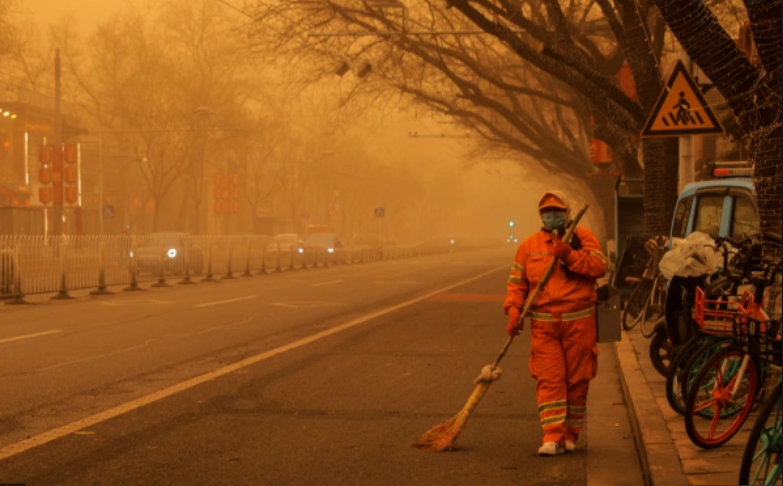China’s worst sandstorm in a decade
China’s capital city woke up to yellow skies on Monday as the biggest sandstorm the country has seen in a decade swept through it with tremendous health air quality concerns
March 22, 2021
A huge sandstorm has covered China in recent days. The thickness of the brown dust shrouded Beijing’s iconic landmarks, which even troubled the Forbidden City and downtown skyscrapers and at times disappeared from view by clouds of sand. The city and surrounding regions have also been suffering from relatively high levels of pollution in recent weeks. The visibility in the capital was reduced to less than 1,000 meters.
The storm caused an unprecedented spike in air pollution measurements with pollution levels in some districts at 160 times the recommended limit. China’s English-language news agency CGTN reported residents who dared go outside to wear headgear to protect their faces. Traffic was jammed and more than 400 flights out of the capital’s two main airports were canceled.
The Beijing Meteorological Observatory warned that people suffering from respiratory conditions should stay inside. They also recommended that city residents should wear masks, gauze or other dust-proof products when going out and wash their faces when they return home. Schools had to suspend all outdoor activities.
On Monday morning, China’s National Meteorological Center issued a yellow alert informing that sand and dust coming from bordering Mongolia would affect 12 provinces and regions across the north, from Xinjiang to Heilongjiang and also Beijing. The sandstorms were later informed to be expected to shift south and should clear out by Wednesday, China’s environment ministry said.
“This is the most intense sandstorm in China in the past 10 years, and the area affected by the sandstorm is also the most extensive in the past decade,” the center said in a memo on its website. Another statement made by Beijing resident Flora Zou was “It looks like the end of the world,” he told Reuters News agency.
Beijing regularly faces sandstorms in March and April due to its proximity to the massive Gobi Desert, as well as deforestation and soil erosion throughout northern China. Which, China has been trying to reforest and restore the ecology of the region to limit the amount of sand blown into the capital. Beijing has even planted a “great green wall” of trees which they plan to trap incoming dust with, and they also tried to create air corridors that can channel the wind and allow sand and other pollutants to pass through more quickly.


